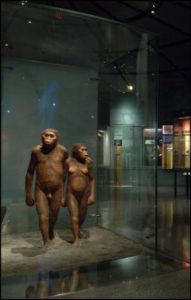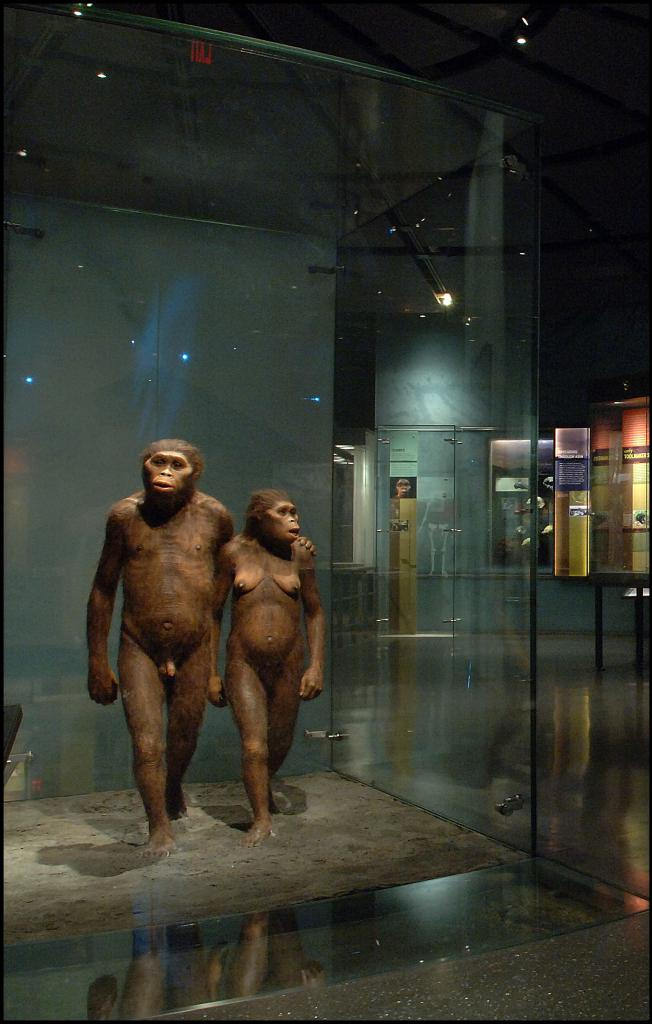
AMERICAN MUSEUM OF NATURAL HISTORY—New research suggests that humans became the large-brained, large-bodied animals we are today because of natural selection to increase brain size. The work, published in the journal Current Anthropology, contradicts previous models that treat brain size and body size as independent traits responding to separate evolutionary pressures. Instead, the study shows that brain size and body size are genetically linked and that selection to increase brain size will “pull along” body size. This phenomenon played a large role in both brain- and body-size increases throughout human evolution and may have been solely responsible for the large increase in both traits that occurred near the origins of our genus, Homo.
“Over the last four million years, brain size and body size increased substantially in our human ancestors,” said paper author Mark Grabowski, a James Arthur postdoctoral fellow in the Division of Anthropology at the American Museum of Natural History. “This observation has led to numerous hypotheses attempting to explain why observed changes occurred, but these typically make the assumption that brain- and body-size evolution are the products of separate natural selection forces.”
That assumption is now being questioned, based on a large body of work that has shown that genetic variation—the fuel of evolution—in some traits is due to genes that also cause variation in other traits, with the result that selection on either trait leads to a correlated response in the unselected trait. Consider the leg bone, or femur, of an elephant. As the bone gets longer, it also gets wider. If artificial selection is used to produce a tall elephant, its legs likely won’t just become long, they’ll also get wider. Part of this effect is due to shared genetic variation, or covariation, among traits in the femur. Grabowski set out to explore this kind of genetic relationship between human brain size and body size, and its impact on our evolution.
____________________________________________
New research shows that a strong selection to increase brain size alone played a large role in both brain- and body-size increases throughout human evolution. This phenomenon also may have been solely responsible for the major increase in both traits that occurred during the transition from human ancestors like Australopithecus, a model of which is seen here in the American Museum of Natural History’s Hall of Human Origins, to Homo erectus. Credit: AMNH/R. Mickens
__________________________________________________________
With brain- and body-size covariation patterns from a range of primates and modern humans, Grabowski created a number of models to examine how underlying genetic relationships and selection pressures likely interacted across the evolution of our lineage. His findings demonstrate, for the first time, that strong selection to increase brain size alone played a large role in both brain- and body-size increases throughout human evolution. This phenomenon also may have been solely responsible for the major increase in both traits that occurred during the transition from human ancestors like Australopithecus (the most famous of which is the Lucy fossil) to Homo erectus.
In other words, while there are many scientific ideas explaining why it would be beneficial for humans to evolve bigger bodies over time, the new work suggests that those hypotheses may be unnecessary; instead, body size just gets pulled along as the brain expands.
“While selection no doubt played a role in refining the physical changes that came with larger body sizes, my findings suggest it was not the driving force behind body-size evolution in our lineage,” Grabowski said. “Therefore, evolutionary models for the origins of Homo based on an adaptive increase in body size need to be reconsidered.”
Source: American Museum of Natural History subject news release.
_______________________________________________________
*The Current Anthropology paper: http://www.journals.uchicago.edu/doi/full/10.1086/685655
____________________________________________________________

______________________________________________
Travel and learn with Far Horizons.
____________________________________________
This richly illustrated issue includes the following stories: Recent findings shedding new light on the whereabouts of the remains of Philip of Macedon, father of Alexander the Great; how an archaeologist-sculptor is bringing bones of the dead back to life; archaeologists uncovering town life at the dawn of civilization; an exclusive interview with internationally acclaimed archaeologist James M. Adovasio about what makes the Meadowcroft Rockshelter prominent in the ongoing search for the first Americans; what archaeologists are finding at the site of the ancient city of Gath, the home town of the biblical Philistine giant, Goliath; and how scientists are redrawing the picture of human evolution in Europe. Find it on Amazon.com.









